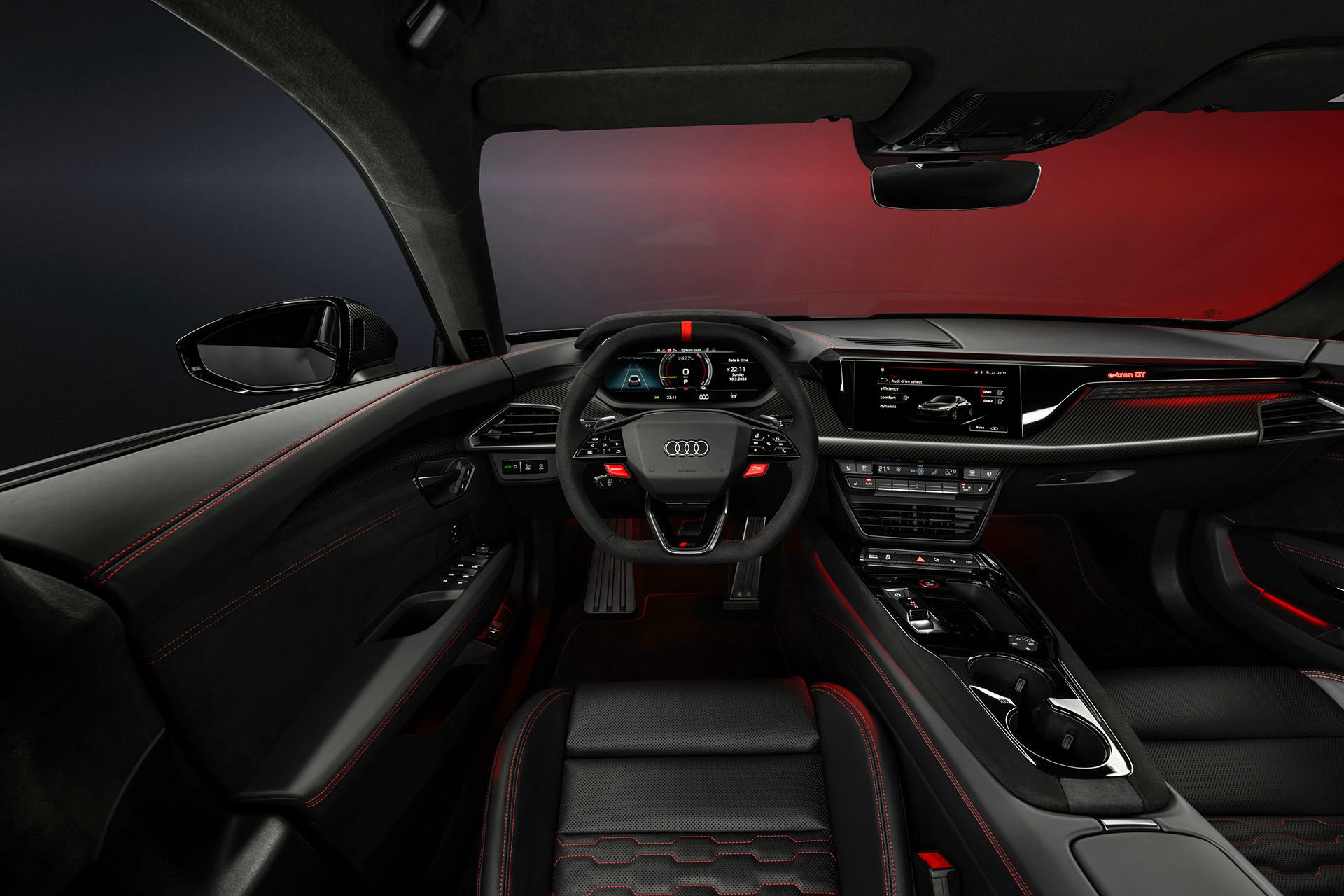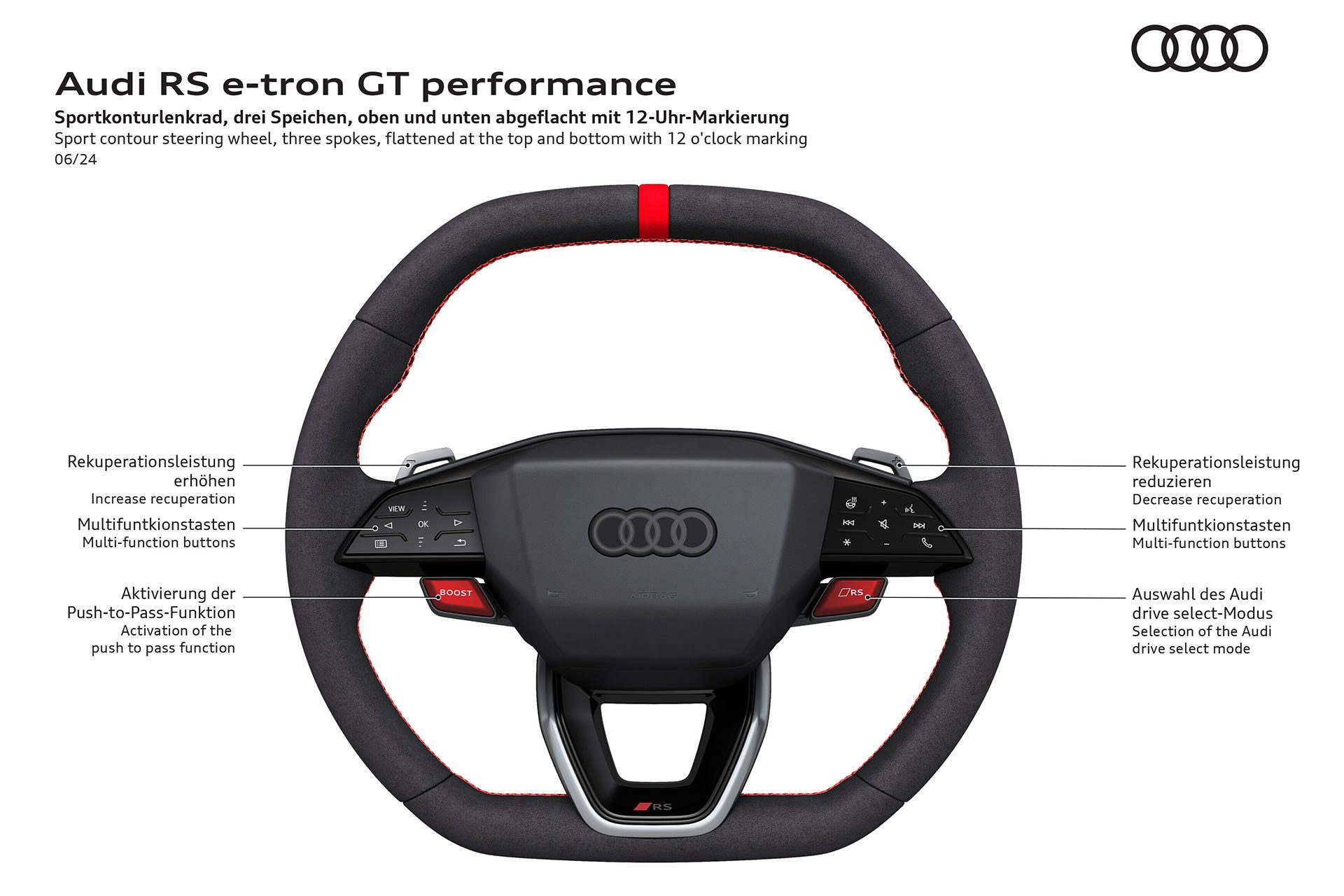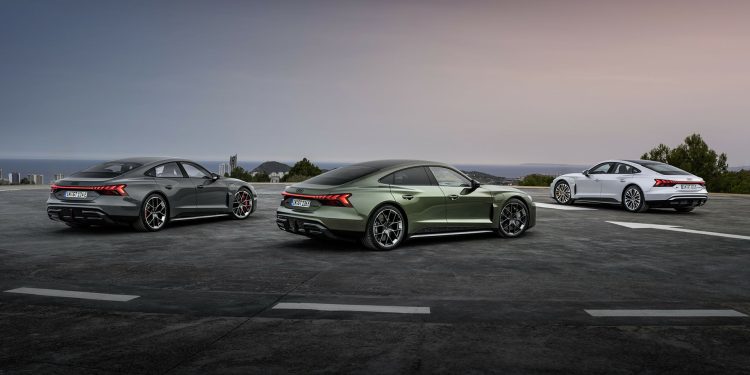Audi e-tron GT goes for Taycan’s jugular
Words NZ Autocar | Images Audi
The Audi e-tron GT is rejigged for 2024, gaining entry-level S and flagship RS Performance models. And a whole heap more performance.
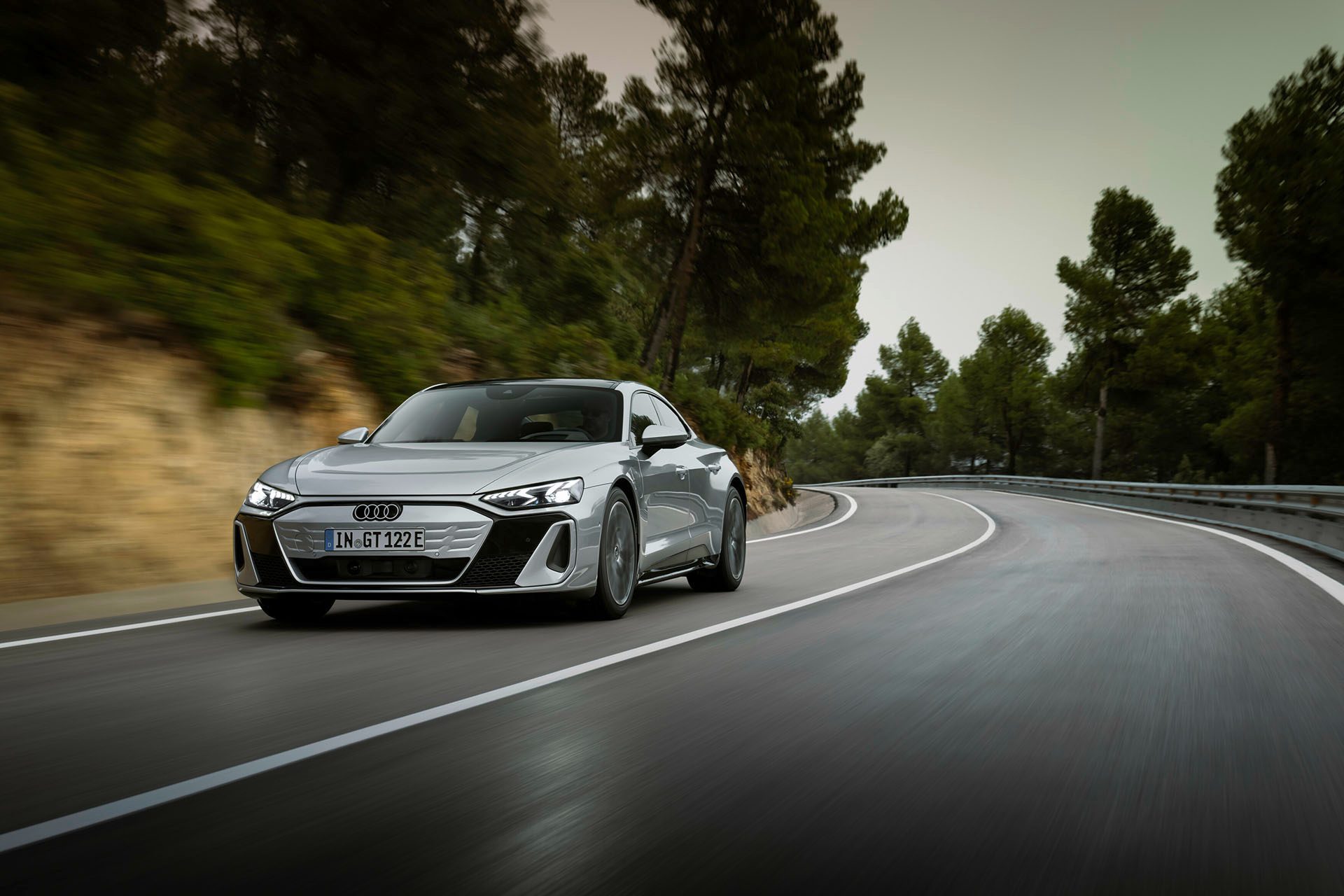
Audi has unveiled an updated Audi e-tron GT that gets a new look, upgraded battery tech and a shedload more power. The RS Performance is the most powerful and quickest accelerating car Audi has ever produced.
The e-tron GT is a cousin to the Porsche Taycan which itself is recently upgraded. They share the same J1 platform, chassis components and battery tech so expect similar updates.
This time around there’s a more potent 97kWh (net) battery pack, up from 84kWh and lighter, more powerful electric motors for all three models.
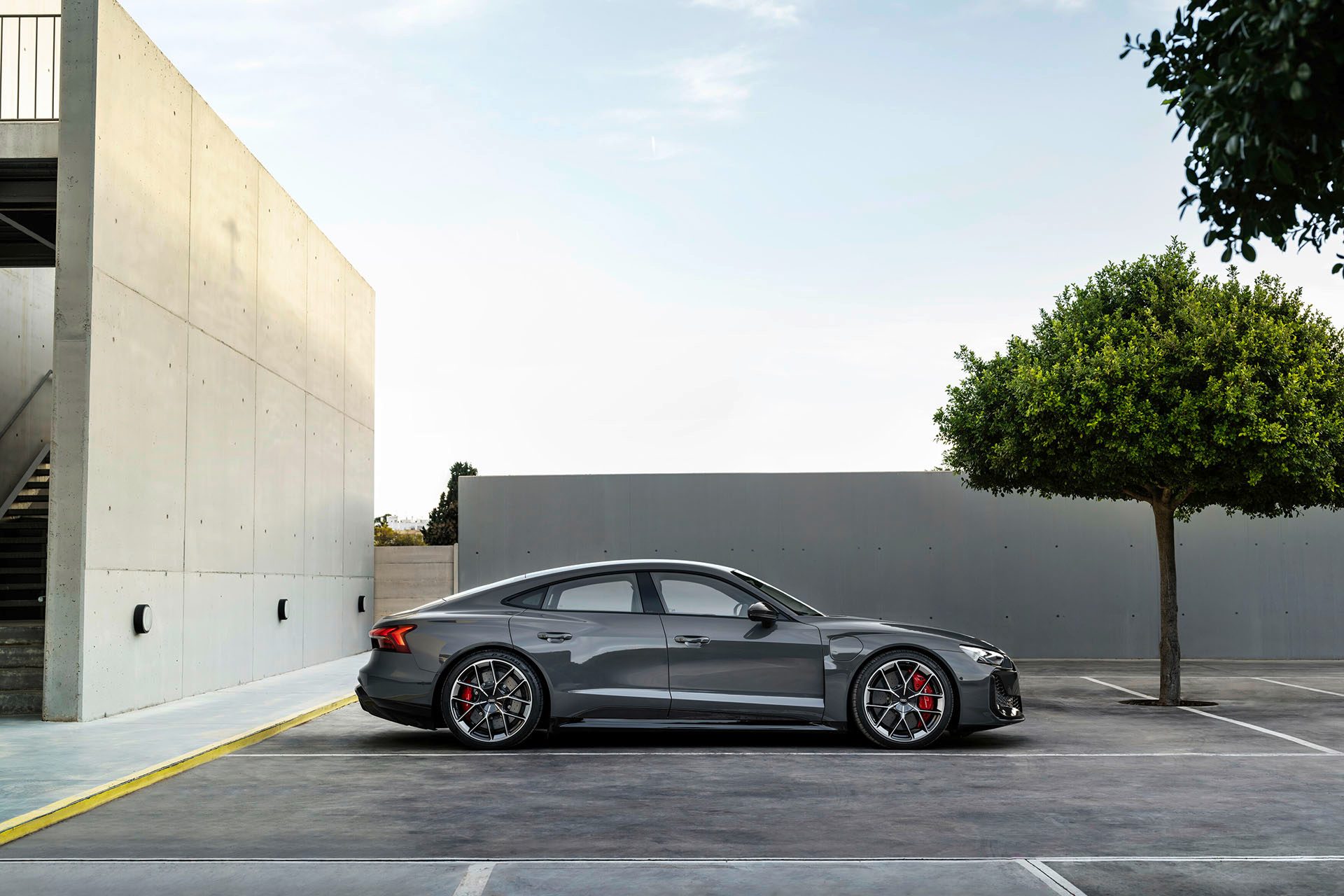
At the top of the heap is the RS Performance model (680kW), reaching 100 from stopped in 2.5 seconds and topping out at a governed 250km/h. No longer does e-tron play second fiddle to Taycan on power and pace.
The standard RS now has 630kW so its sprint time is still a blistering 2.8 seconds. The new entry-level S, also dual motor, gets just on 500kW and has a 3.4 second time for the 100km/h dash. RS models come with a Boost function that adds a further 70kW for ten-second periods, should the regular tally be insufficient.
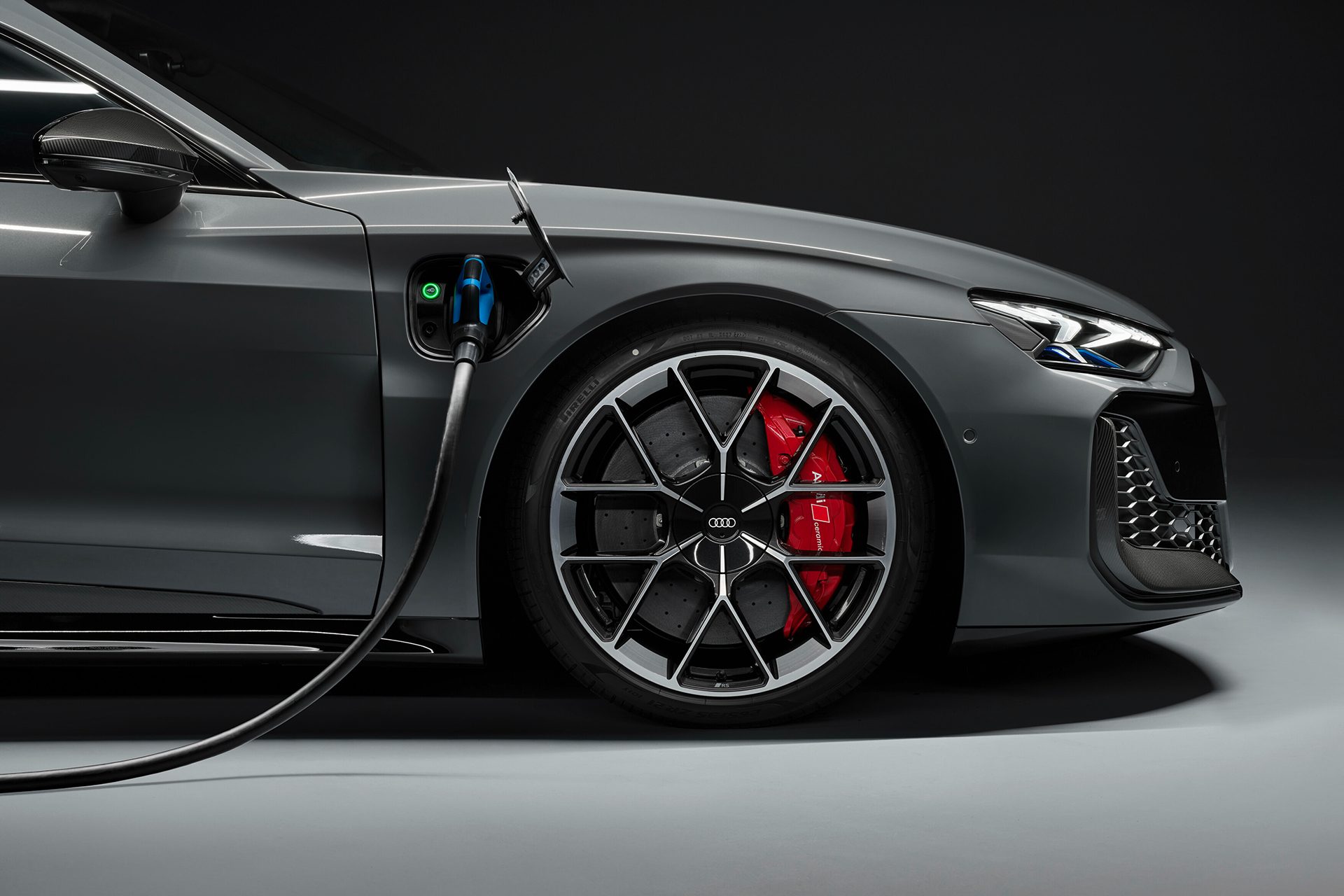
Despite the added power there’s also enhanced energy efficiency, with an estimated range of up to 600km when driven modestly. New charging hardware means e-tron GT can now hook up to a 320kW DC fast charger (formerly 270kW). A 10 to 80 per cent rezip then takes 18 minutes.
Dynamics take a leap ahead too. All models feature a new air-suspension system with dual-chamber air springs and dual-valve dampers. This confers greater levels of ride comfort and yet more resilient body control in sport mode.
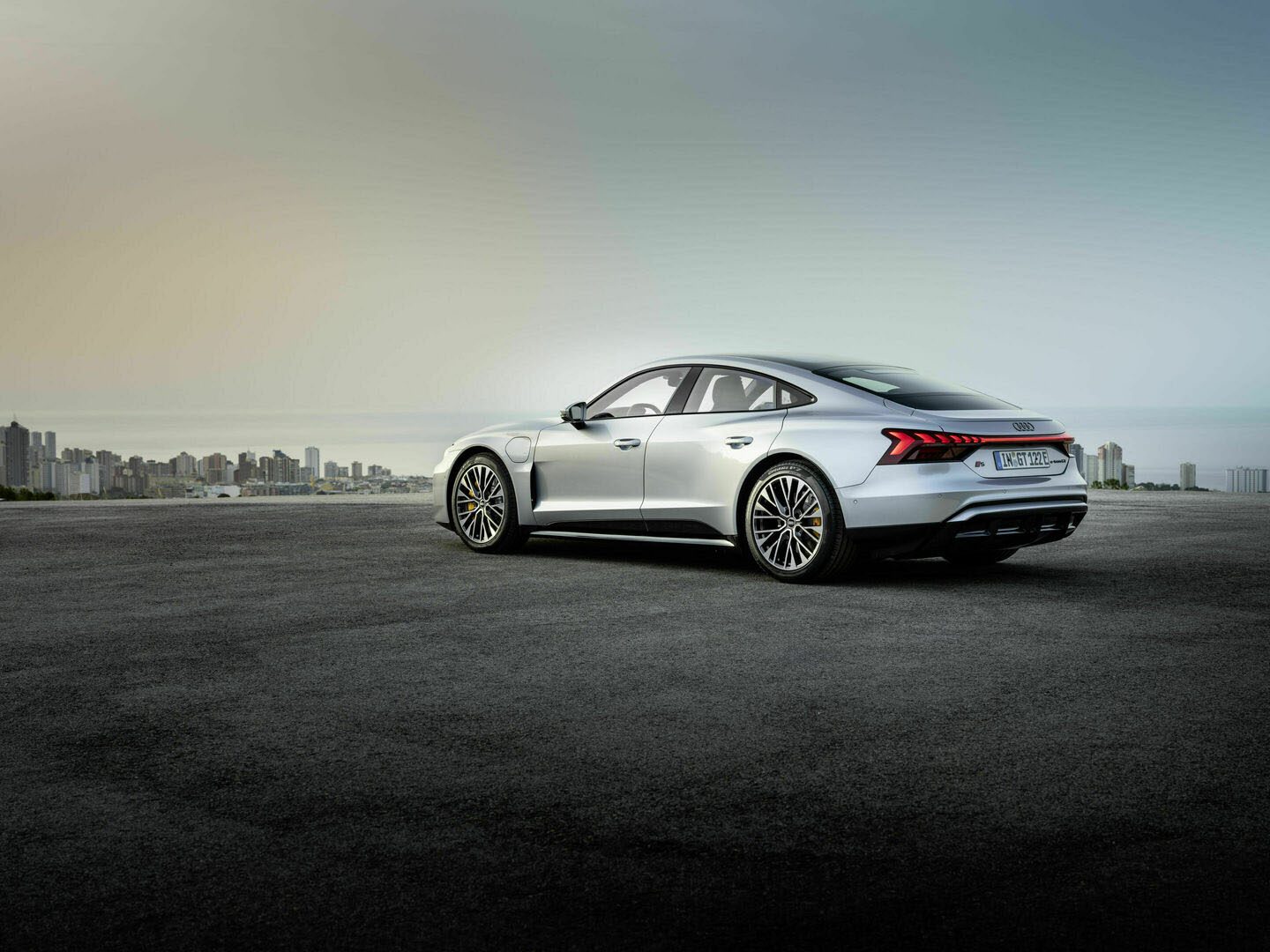
There’s also an optional Active Ride system with fully-active dampers and the same air springs to give even sterner control of roll and pitch. Other advantages include an ‘entry-mode’ that raises ride height and active cornering control, countering pitch and roll on the go in and out of corners. The system is more comfort biased. However, the anti-roll bars disappear and hydraulic actuators are used to counter body lean.
Steel brakes are standard on the S model, while RS versions come with silicon-coated discs that better dissipate heat. As a cost option, you can specify full carbon ceramic brakes featuring 10-piston calipers in silver or red.
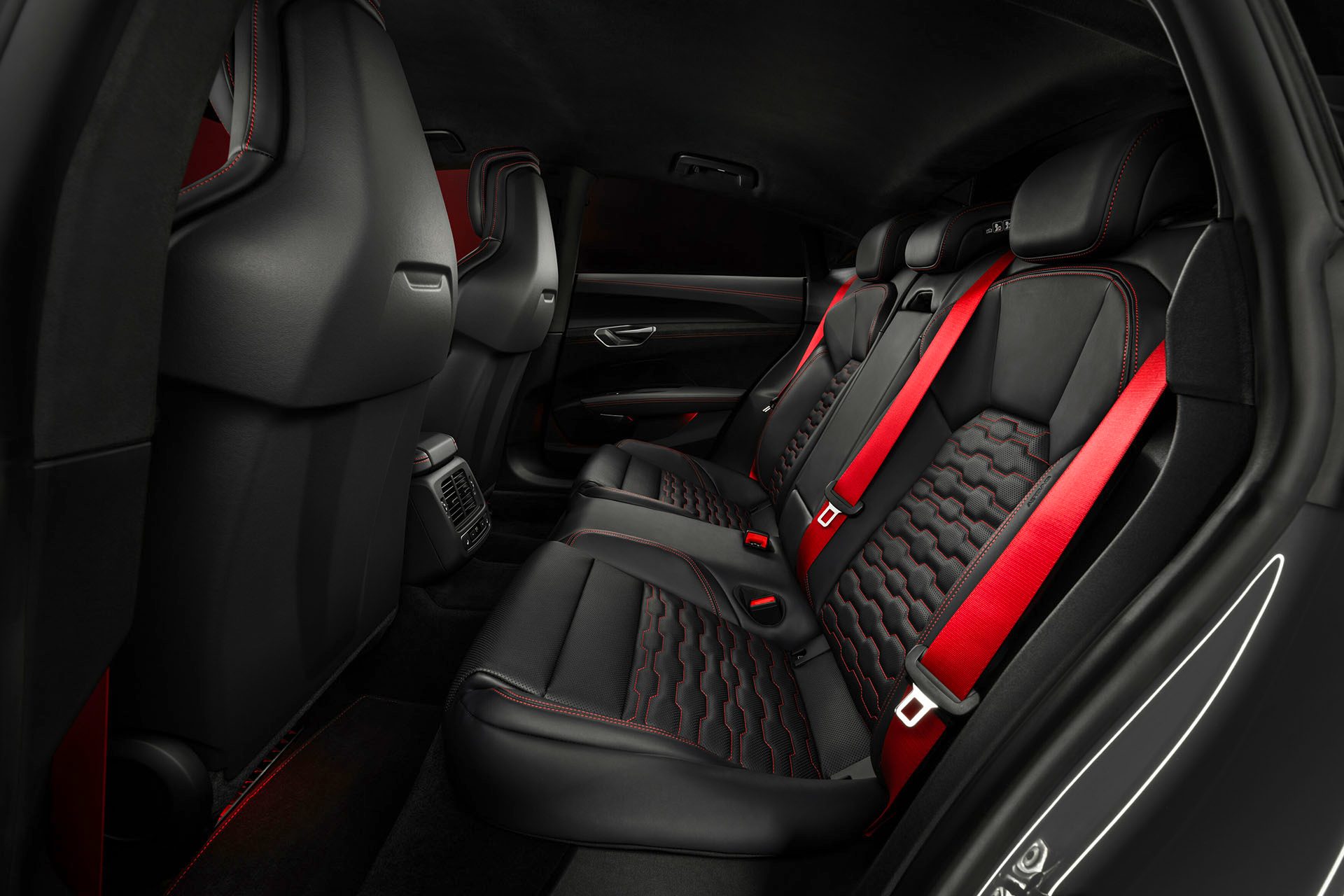
Visually, there are two bumper options. Audi will also offer a fresh 20-inch wheel design, and a new range of exterior colours.
RS models come with their own front-end design that includes larger air intakes and a sportier look. At the rear is a new diffuser insert with a vertical reflector. Moreover, the RS variants come with unique 21-inch forged wheels reminding of the ‘Avus’ wheels of earlier Audi Sport models.
The RS e-tron GT Performance is distinguished by “chopped” (camouflage) carbon elements around the front grille, side skirts and rear diffuser.
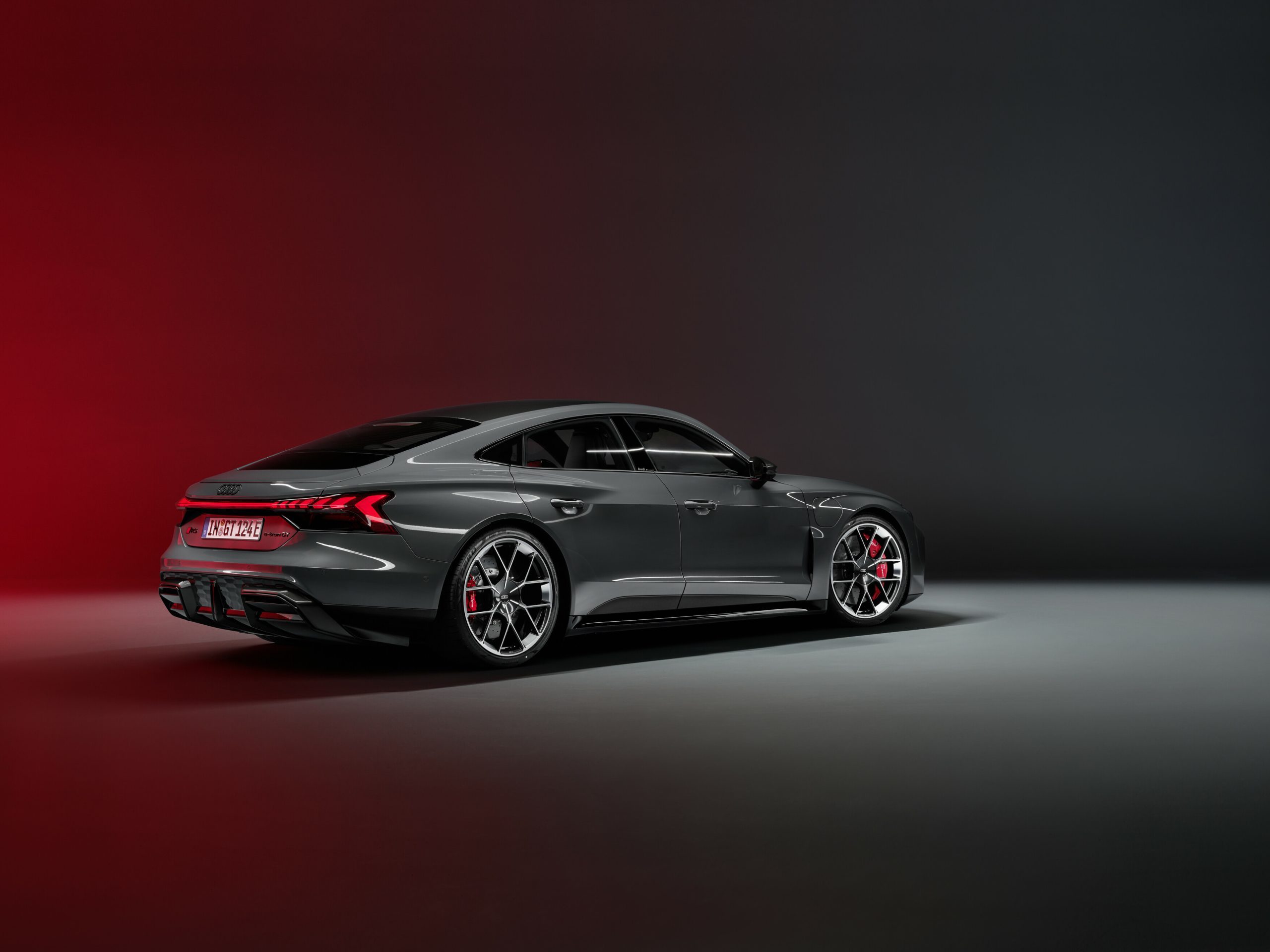
Audi has also tweaked the interior with new colour and trim elements, plus updates to the 10.1-inch touchscreen and virtual cockpit driver’s display. There’s a new steering wheel flat on the top and bottom. It is destined for all future Audi RS models. GT Performance adds more chopped carbon to the cabin, across the dash, doors and centre console.
Expect them to go on sale midyear in Europe, so later this year over here. A price rise reflects new tech and added equipment.
